ISSN: 0973-7510
E-ISSN: 2581-690X
The present study aimed to formulate a natural medicine based upon the activity of three culinary herbs, namely, Plectranthus amboinicus, Mentha piperita and Ocimum basilicum combined with natural Aloe vera gel against common bacterial skin infections. Different isolates were obtained from skin infections such as boils, folliculitis, acne, papules, rashes, pustules etc. Gram-positive cocci such as Staphylococcus aureus, Staphylococcus epidermidis and Streptococcus pyogenes were isolated from the samples and were identified based on preliminary tests, cultural characteristics and biochemical tests. A decoction of all the three herbs at a concentration of 100 mg/ml was prepared using three different solvents, namely, methane, acetone and water and tested against the pathogens using agar well diffusion method. Aloe vera gel was prepared and tested in combination with the three extracts to test for synergism. Results indicated that methanolic extract showed more inhibitory activity and Staphylococcus epidermidis was found to be more sensitive to the herbal extracts than the other two organisms. Thus, an effective natural medicine was prepared.
Plectranthus amboinicus (Ajwain plant/ Mexican mint/ Indian borage/ Karpooravalli), Mentha piperita (Peppermint/ Pudina), Ocimum basilicum (Sweet Tulsi/ Thiruneetru pachilai), Aloe vera, skin infections, antimicrobial activity, Staphylococcus aureus, Staphylococcus epidermidis, Streptococcus pneumoniae
The natural world is a good source of therapeutic products that can inhibit the growth of bacteria. However, due to the increased incidence of new infections and the increasing incidence of bacterial resistance to antibiotics, there is a need to discover the diverse natural compounds that are easily available amongst plants and animals. The use of synthetic drugs containing microbes that are biochemically and genetically modified as a treatment of common infectious disease are not reliable due to many controversial issues. Synthetic drugs are not only expensive and inadequate but also often had issues with adulterations and side effects (Nor Aishah Hasan et al., 2013). Moreover, different plant parts or plant species are used in combination to achieve the same goal with great efficacy. In fact, it is thought that herbal remedies have the advantage in combining their active components to obtain synergistic or additive effects which give to the plants an efficiency superior to some of their isolated components.
A skin infection is an infection of skin and associated soft tissues. The pathogen involved is usually a bacterial or fungal species. Such infections often require treatment by antibiotics. Viral and parasitic skin infections also occur but are less common. Common skin infections include moles, skin tags, ringworm infections, acne, cellulitis, hives, chicken pox, eczema, rosacea, seborrheic dermatitis, psoriasis, vitiligo, impetigo, warts, skin cancer and other dermatophyte infections that can be cured by several traditional medicines such as Azadirachta indica (Nand et al., 2016), Zizyphus mucronata (Olufunmiso et al., 2013), Aloe vera, turmeric, by using a combination of different natural substances like clay (Preeti et al., 2016), other therapeutic drugs (Sinha et al., 2014) etc. Recurrently, acne vulgaris is a common dermatological condition allied with depression, anxiety, and other psychological sequelae. Acne is one of the most common multifactorial chronic inflammatory diseases of the pilosebaceous follicles that can be treated by a combination of several medicines (Julianti et al., 2017).
Lamiaceae or Labiatae is a family of flowering plants commonly known as the mint or deadnettle family. Indian borage (Plectranthus amboinicus), also known as country borage, is a medicinal plant used widely in Indian medicine. It is a succulent, aromatic, perennial herb belonging to the family Lamiaceae, and decoction of its leaves is used for several medicinal purposes (Greetha et al., 2016). The antimutagenic, antitumorigenic and antigenotoxic effects of Indian borage leaves are well documented, and recently its antimicrobial properties have also been reported Arunkumar et al. (2011). Ocimum basilicum, also known as Sweet Tulsi is a culinary herb due to the characteristic flavors it imparts. Basil seeds have been used in traditional medicine for a long time to treat colic ulcer, dyspepsia, diarrhea and inflammations, among other ailments (Ahmet et al., 2005 and Mueen et al. 2015). Mentha piperita, is a medicinally important plant and commonly known as peppermint is a hybrid of Mentha spicata (spearmint) and Mentha aquatica (watermint). In Eastern and Western traditional medicine peppermint and its oil have been used as an antispasmodic, aromatic, antiseptic and also in the treatment of cancers, colds, cramps, indigestion, nausea, sore throat and toothaches (Bupesh et al. -2007). Aloe vera gel is widely known for its anti-inflammatory properties and is used for the treatment of various skin infections.
Sample collection and processing
About 27 skin samples from the face, arms and legs were collected from people suffering from skin infections by using sterile cotton swabs. These swabs were then inoculated into a basal medium and different selective media. The pathogens were isolated and identified using biochemical tests and preliminary tests.
Plant material collection and processing
Fully matured green leaves of Plectranthus amboinicus (Indian borage) were obtained from home-grown plants and Mentha piperita (Spearmint) leaves were collected from a local market. Plant species were identified by verifying the colour pictures followed by description and identification characters. The plant leaves were thoroughly washed with tap water to avoid dust and other unwanted materials accumulated on the leaves from their natural environment. The dust free leaves were allowed to dry under shade for 15-20 days. The dried leaves were powdered by using electric blender. Finally, fine powder was collected from the powdered leaves by sieving through a strainer and used for extraction. Matured seeds of Ocimum basilicum (Sweet Tulsi) were collected from a local market and the seeds were powdered into a fine dry powder using an electric blender and stored in air tight bottles for extraction.
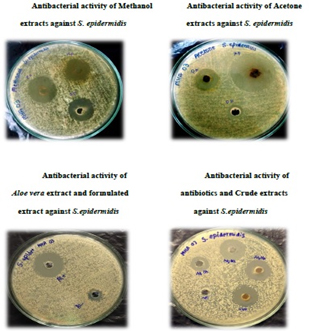
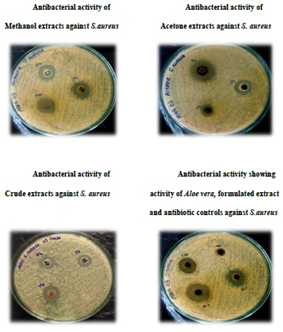
Fig. 1. Antibacterial activity of different extracts against the pathogens isolated
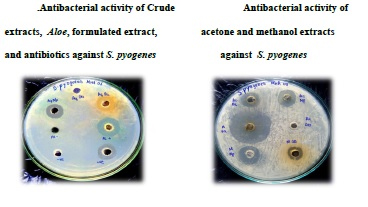
Preparation of plant extracts
Various extraction methods have been proposed by several researchers. Extraction methods for medicinal and aromatic plants were discussed by Sukhdev Swami et al.(2008).
Preparation of crude plant (aqueous) extract
10g of each powdered plant material was added to 100 mL of distilled water (Wan Nordini et al., 2013). The mouth of the conical flask was covered with aluminium foil and agitated manually for 5-10 minutes for thorough mixing and also for complete elucidation of active materials to dissolve in water. The solvent was evaporated in a boiling water bath for 1 hour. Then, the extract was filtered by using a clean muslin cloth followed by filtration with Whatman no. 1 filter paper. The filtrate was then centrifuged for 5 minutes at 3500 rpm at room temperature. The supernatant was collected and stored for further use (Azwanida et al.)
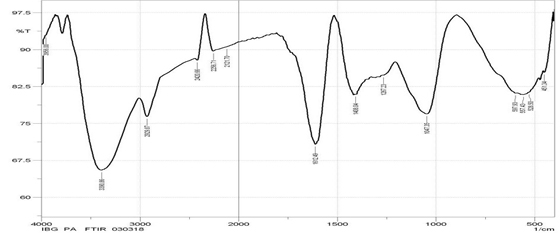
Fig. 1.1. FT-IR Analysis of Mentha piperita crude extract
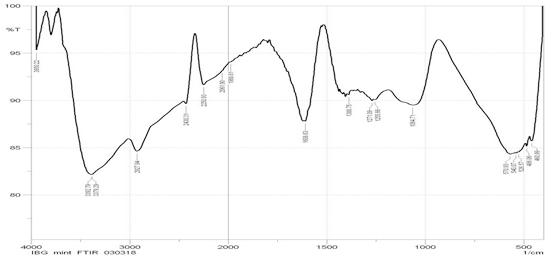
Fig. 1.2. FT-IR Analysis of Plectranthus amboinicus aqueous extract
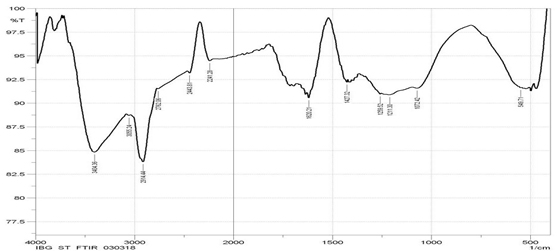
Fig. 1.3. FT-IR Analysis of Ocimum basilicum aqueous extract
Preparation of methanol extract
The methanol extract of the powdered materials was prepared by taking about 10 g of the powdered sample was extracted with 100 mL of methanol by mixing well in a flask followed by filtration through Whatman No. 1 filter paper. The filtrate was centrifuged at 5000 rpm for 15 minutes at room temperature. The supernatant was collected and concentrated using a water bath, and the crude extract collected stored in tubes until further use.
Preparation of acetone extract
10 g of dried powder was weighed and homogenized with 100 ml of acetone at a concentration of 100mg/ml (N.Lall et al. -2000). The mixture was filtered, and filtrate was collected and centrifuged at 5000 rpm for 15 min at room temperature. Supernatant was collected and stored until further use.
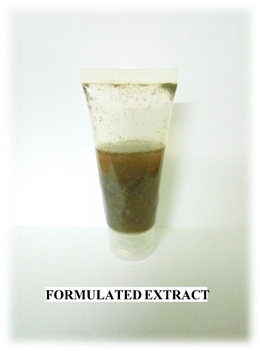
Fig. 2. Formulated extract containing 1:1:1:1 ratio of Aloe vera: Plectranthus amboinicus : Mentha piperita : Ocimum basilicum
Preparation of isolated organisms for antimicrobial activity
The isolated organisms were separately inoculated into nutrient broth and incubated for 24-48 hours until turbidity was observed, and it was adjusted according to Mac Farland’s standard of 0.5.
Agar well diffusion method
Different isolates were made into a lawn culture on Mueller- Hinton agar plates. Agar plates were punched with a sterile cork borer of 4 mm size and 100 µL of each extract was poured with micropipette in the wells and positive and negative controls were also employed. Both individual and combined extracts were poured in different wells to study individual and combined activity of the extracts. The plates were allowed to standby for 30 min. The plates were then incubated at 37°C for 24- 48 hours.
Formulation of medicinal extract
Fresh plant medicinal formulation was prepared using Aloe vera gel as a base. Aloe vera leaves were plucked and the gel was scooped out. The liquid viscous gel was then heated for clarification (Chandegara et al., 2015). All the three plant powders were taken and mixed with fresh Aloe gel at a concentration of 100mg/ml of gel in the ratio 1:1:1:1. The prepared gel was then stored in a tube and refrigerated until use. No preservatives were added, and the efficiency of this formulation was tested against the isolated pathogens. The results were then compared with the activity of pure Aloe vera gel extract. No preservatives were added to the gel and the efficiency of the gel was tested after a week and after a month.
The samples were collected by swabs and streaked onto different selective media such as Mannitol Salt agar, blood agar and Streptococcus isolation agar and the pathogens were found to be Staphylococcus aureus, Staphylococcus epidermidis and Streptococcus pyogenes after confirming with preliminary tests and biochemical tests.
FT-IR analysis was done to identify the functional groups present in the crude extract. FT-IR analysis of Plectranthus amboinicus showed peaks at 597.93 cm-1, 1047.35 cm-1, 1267.23 cm-1, 2929.87 cm-1 and 3390.86 cm-1 indicating the presence of C-N, C-H and O-H functional groups. Mentha piperita extract showed peaks at 570.93 cm-1, 1388.75 cm-1, 2250.93 cm-1, 2927.94 cm-1, 3379.29 cm-1 and 3392.79 cm-1. This indicated the presence of functional groups such as CN, C-H and N-H groups. Ocimum basilicum seed extract showed the peaks at 1072.42 cm-1, 1427.32 cm-1, 1620.21 cm-1, 2241.28 cm-1 and 2762.06 cm-1 indicating functional groups such as C-H, C=C, CºC and O-H groups. This could belong to alkenes, alkaloids, glycosides, flavonoids or tannins.
Antimicrobial assay
Antimicrobial assay was performed, and it was found that the effectiveness of the extract was found to be more in methanol extracts followed by aqueous extracts as shown in the Table 1.1. Acetone extracts were least effective. Staphylococcus epidermidis was found to be more sensitive to these plant extracts. The pure Aloe vera extract was found to be less effective against the isolated pathogens. However, the formulated extract containing mixture of Aloe and the other culinary herbs showed the highest activity against all the pathogens, thus showing a synergistic effect. The formulated gel was found to be effective for a month without any preservatives.
Table (1):
Biochemical tests and Sugar Fermentation tests.
S.No. |
Biochemical tests |
S. epidermidis |
S. aureus |
S. pyogenes |
|---|---|---|---|---|
1. |
Catalase test |
+ |
+ |
– |
2. |
Oxidase test |
– |
– |
– |
3. |
Nitrate test |
+ |
+ |
– |
4. |
Urease test |
+ |
+ |
– |
5. |
Coagulase test |
+ |
– |
– |
Sugars |
S.epidermidis |
S.aureus |
S.pyogenes |
|---|---|---|---|
Glucose |
+ |
+ |
+ |
Lactose |
+ |
+ |
+ |
Sucrose |
+ |
+ |
+ |
Maltose |
+ |
+ |
+ |
Mannitol |
– |
+ |
– |
Table (2):
Diameter of zone of inhibition.
| S. no. | Name of the plant extract | Zone diameter (mm) | ||
|---|---|---|---|---|
| Acetone Extract | S. epidermidis | S. aureus | S. pyogenes | |
| 1 | Plectranthus amboinicus | 20 | 10 | 12 |
| 2 | Mentha piperita | 16 | 30 | 14 |
| 3 | Ocimum basilicum | 6 | 12 | Nil |
| S. no. | Name of the plant extract | Zone diameter (mm) | ||
|---|---|---|---|---|
| Crude Extract | S. epidermidis | S. aureus | S. pyogenes | |
| 1 | Plectranthus amboinicus | 20 | 4 | 14 |
| 2 | Mentha piperita | 20 | 8 | 14 |
| 3 | Ocimum basilicum | 10 | 4 | Nil |
Zone in mm |
S. epidermidis |
S. aureus |
S. pyogenes |
|---|---|---|---|
Aloe vera |
6 |
14 |
Nil |
Formulated extract |
28 |
24 |
16 |
Positive control |
Penicillin G |
Amoxycillin |
Penicillin G |
20 |
16 |
12 |
|
Negative control |
Oxacillin |
Oxacillin |
Erythromycin |
– |
– |
– |
This study reports the antimicrobial activity of plant extracts of Plectranthus amboinicus, Ocimum basilicum and Mentha piperita against microorganisms causing skin infections. Skin infections are generally caused by Staphylococcus aureus, Staphylococcus epidermidis, Streptococcus pyogenes, Pseudomonas aeruginosa, Lactobacillus plantarum, Candida albicans, Trichophyton rubrum, Bacillus subtitlis, Aspergillus fumigatus and Aspergillus niger according to C. Govindasamy and Mani Arulpriya (2013). The current study investigated the skin infections caused by Staphylococcus aureus, Staphylococcus, epidermidis, Streptococcus pyogenes. Plant extraction methods vary and maceration and Soxhlet extraction is one of the widely used methods (Sahira Banu et al., 2015). Synergistic effects from combinations of different plant extracts are known to work as effectively as antibiotics (Sumitra Chanda et al. 2011).
A study by Dixon Dhawan and Jeena Gupta (2017) on comparison of different solvents for plant extraction showed maximum yield with methanol, water and acetone followed by ethanol and chloroform. The results from the studies of K. Padmalochana and M.S. Dhana Rajan (2014) have shown that every phytochemical could get extracted with different solvents. This might differ according to the polarity of the solvent. Methanolic leaf extract has shown that it has extracted most of the compounds and this is confirming that methanol is being used as a solvent in Ayurveda centers for extracting bioactive compounds. Hence, the polarity of the solvent is the major characteristic of them to be used as a basic for extraction. The present study used methanol, acetone and crude extracts to obtain maximum yield of plant drugs.
Exploring bioactive medicinal plants in treatment of diseases is one of the best approaches because they are easily available in nature. Naturally plants are rich store houses for potential bioactive compounds which are gaining appreciation in recent times among the scientific communities. Any plant species showing promising bioactivity in aqueous extract is a valuable source for the wealth of resource poor communities.
Crude extracts of the plants may have mixtures of active compounds which act synergistically, and their overall bioactivity is greater than their individual compounds. As per the review of Kusum Lata and Sharmita Gupta (2015), synergism was reported for the first time and was the significant finding of their work on the individual and combined extract activity of Azadirachta indica, Aloe vera and antibiotics. The synergistic effect may be due to certain complex formation which becomes more effective in the inhibition of a particular species of microorganisms either by inhibiting the cell wall synthesis or by causing its lyses or death. Thus, it is concluded that to control a particular disease in vitro experiments should be carried out with various antibiotics and their combination as well as antibiotics and plant extracts, so that a right combination may be administered to the patient for early and safe recovery from a specific ailment. All the combinations do not produce synergistic effect and therefore a number of combinations are required to be tested (Ranjan et al, 2012). As there are few clinical evidences about the effectiveness and safety of these plants in the treatment of acne and other skin infections, chemical drugs seem to still be the first choice in the treatment of acne and skin infections. Some plants reviewed in this paper have shown promising results. Hence, they might possibly be used alone or as adjuvant with other therapeutic measures or in mild to moderate situations. Possible contact sensitization especially in topical or oral use should be considered. Some plants, especially the roots of mountain grapes, tea tree oil, Saccharomyces, and perhaps Ocimum basilicum due to their effectiveness and safety can be compared to alternative treatments with synthetic drugs for mild to moderate acne and other skin infections (Hamid Nasri et al., 2015).
Plectranthus amboinicus is an important aromatic medicinal herb packed with many bioactive constituents and nutrients, which are important for maintaining good health. The plant has shown a wide range of biological properties and proved to be effective in curing respiratory, cardiovascular, oral, skin, digestive and urinary diseases and its antimicrobial properties have been reported by Gupta et al. (2016) and Yuthistran et al. (2015). The biological properties are attributed to the occurrence of a wide range of bioactive compounds in the plant extracts as well as an essential oil. Thus, it can be stated that P. amboinicus has huge prospects in meeting the global demand for natural, cost-effective and safer bioactive molecules in pharmaceutical and nutraceutical industries.
Basil seeds are traditionally believed to be used for therapeutic purpose to improve blood circulation, reduce inflammation, reduce the oxidation of cholesterol, and increase immune function and to control blood sugar level. In present study, basil (Ocimum basilicum) seeds were used as the raw material for evaluation of their bioactive compounds in the study conducted by Anudurga Gajendiran et al. (2016). The strongest inhibitory activity of basil seeds extract was observed against Pseudomonas aeruginosa, Escherichia coli, Shigella dysenteriae and Klebsiella pneumoniae (Muafia Shafique et al., 2011)
Mentha piperita L. (Peppermint) is a perennial glabrous and strongly scented herb belonging to family Lamiaceae. The plant is aromatic, stimulant and used for allaying nausea, headache and vomiting. Its oil is one of the most popular widely used essential oils in food products, cosmetics, pharmaceuticals, dental preparations, mouthwashes, soaps and alcoholic liquors. The antibacterial potential of six extracts from leaf, stem and root of Mentha piperita against pathogenic bacteria such as Bacillus subtilis, Streptococcus pneumonia, Staphylococcus aureus, Escherichia coli, Proteus vulgaris and Klebsiella pneumonia with the organic (ethanol, methanol, ethyl acetate, chloroform, hexane and petroleum ether) extracts of the leaves are said to possess strong antibacterial activity against a range of pathogenic bacteria and its pharmacological effects have been reported by Punit Shah et al. (2004).
The current study evaluated the antibacterial activity of these three extracts against the different organisms isolated from skin infections. The organisms were found to be sensitive to all the extracts. Methanol extracts were more inhibitory towards the organisms. The acetone extracts had less effect compared to the other extracts. The formulated extract combined with Aloe vera gel showed significant increase in the antimicrobial activity indicating synergism of the extracts.
ACKNOWLEDGMENTS
None.
CONFLICT OF INTEREST
The authors declare that there is no conflict of interest.
- Ahmet Adygea, Meryem Sengul, Hatice Ogutcu, Fikrettin Sahin, Isa Karaman. Antimicrobial Effects of Ocimum basilicum (Labiatae) Extract, Turk J Biol, 2005; 29: 155-160
- Anudurga Gajendiran, Vidhya Thangaraman, Suji Thangamani, Dhatchayani Ravi and Jayanthi Abraham. Antimicrobial, antioxidant and anticancer screening of Ocimum basilicum seeds. Bull. Pharm. Res., 2016; 6(3): 114-119
- Arunkumar Sathasivam and Karthikeyan Elangovan. Evaluation of Phytochemical and antimicrobial activity of Plectranthus amboinicus. International Journal of Research in Ayurveda and Pharmacy, 2011; 2(1) : 292-294
- Azwanida N. A Review on the Extraction Methods Use in Medicinal Plants, Principle, Strength and Limitation, Medical and Aromatic Plants, 2015 ; 2015; 4:3: 1-6
- G. Bupesh, C. Amutha, S. Nandagopal, A. Ganeshkumar, P. Sureshkumar, K. Saravana Murali. Antimicrobial activity of Mentha piperita L. (Peppermint) from leaf extracts- a medicinal plant, Acta agriculture Slovenica 2007: 73-79
- Dixon Dhawan and Jeena Gupta. Comparison of different solvents for phytochemical extraction potential from Datura metel plant leaves. Intl.J.Biol.Chem. 2017; 11(1):17-22, 2017
- Dr.Sharmita Gupta, KusumLata. Synergistic Effect of Azadirachta indica L., Aloe Vera L. and Antibiotics against E. coli Bacterium, International Journal of Pharmaceutical Research and Bio-Science. 2015; 4(2): 291-304
- Elin Julianti, Kasturi K. Rajah and Irda Fidrianny. Antibacterial Activity of Ethanolic Extract of Cinnamon Bark, Honey and Their Combination Effects against Acne- Causing Bacteria, Sci. Pharm. 2017; 85(19): 1-8
- C.Govindasamy and Mani Arulpriya. Antimicrobial activity of Acanthus ilicifolius: Skin infection pathogens. Asian Pac J Trop Dis. 2013; 3(3): 180–183.
- Greetha Arumugam, Mallappa Kumara Swamy and Uma Rani Sinniah. Plectranthus amboinicus (Lour.) Spreng: Botanical, Phytochemical, Pharmacological and Nutritional Significance, Molecules. 2016; 21(369): 1-26
- Hamid Nasri, Mahmoud Bahmani, Najmeh Shahinfard, Atefeh Moradi Nafchi, Shirin Saberianpour and Mahmoud Rafieian Kopaei. Medicinal Plants for the Treatment of Acne Vulgaris: A Review of Recent Evidences, Jundishapur. J Microbial 2015 ; 8(11) (2015): 1-9
- K. Padmalochana and M. S. DhanaRajan. Antimicrobial activity of Aqueous, Ethanol and Acetone extracts of Sesbania grandiflora leaves and its phytochemical characterization, International Journal of Pharma Sciences and Research (IJPSR) 2014 ; 5(12): 957-96
- K. Sahira Banu and Dr. L. Cathrine. General techniques involved in Phytochemical analysis, International Journal of Advanced Research in Chemical Science 2015 ; 2(4): 25-32
- Muafia Shafique, Shaista Jabeen Khan and Nuzhat Habib Khan. Study of antioxidant and antimicrobial activity of sweet Basil (Ocimum basilicum) essential oil, Pharmacology online 2011: 105-111
- Mueen Ahmad, Syeda Batool Naz, Asifa Sharif, Maimoona Akram and Muhammad Asad Saeed. Biological and Pharmacological Properties of the Sweet Basil (Ocimum basilicum), British Journal of Pharmaceutical Research. 2015; 7(5): 330-339
- N. Lall, J. J. M. Meyer. Antibacterial activity of water and acetone extracts of the roots of Euclea natalensis, Journal of Ethnopharmacology 2000; 72: 313-316
- Nor’Aishah Hasan, Mohd. ZainiNawahwi and HaslindaAbMalek. Antimicrobial Activity of Nigella sativa Seed Extract, Sains Malaysiana 2013; 42(2): 143–147
- Olufunmiso Olusola Olajuyigbe and Anthony Jide Afolayan. Evaluation of Combination Effects of Ethanolic Extract of Ziziphus mucronata Willd. Subsp. Mucronata Willd. and Antibiotics against Clinically Important Bacteria, The Scientific World Journal 2013: 1-9
- Pratibha Nand, Sushma Drabu, Rajinder K. Gupta. Insignificant anti-acne activity of Azadirachta indica leaves and bark, Journal of Pharmaceutical Negative Resuts 2012 ; 3(1): 7-12
- Preeti Dharmik, Ashok Gomashe and Sapna Sapate. Evaluation of Synergistic Activity of Clay and Herbal Medicine against pyogenic acne bacteria, IJPPR 2016 ; 6(2): 281-289
- Priyam Sinha, Shruti Shrivastava, Nidhi Mishra and Narayan Prasad Yadav. New Perspective on Anti Acne Plant Drugs: Contribution to Modern Therapeutics, BioMed Research International 2014: 1-19
- Punit P. Shah and M. D. Mello (2004). A review of medicinal uses and pharmacological effects of Mentha piperita, Natural Product Radiance 3(4) (2004): 214-221
- R. Yuthistran, C. Balakrishnan, R. Buddhan. Antibiotic Effect of Leaf Extract from Plectranthus amboinicus (Lour) Spreng in Asthma, International Journal of Advance Research and Innovation 2015; 3(2): 430-432
- Ranjan S., Bavya K, Muntaj SK, Glory Basumata, Rajesh Matcha, “Synergistic effect of some medicinal plants and antibiotics against few pathogenic bacteria”, International research journal of pharmaceutical research., 2012; 3(8), 1000-1004.
- Sandeep Kumar Gupta and Pradeep Singh Negi. Antibacterial Activity of Indian Borage (Plectranthus amboinicus Benth) Leaf Extracts in Food Systems and Against Natural Microflora in Chicken Meat, Food Technol. Biotechnol. 2016; 54(1): 90-96
- Sukhdev Swami Handa, Suman Preet Singh Khanuja, Gennaro Longo, Dev Dutt Rakesh. Extraction technologies for medicinal and aromatic plants, International centre for science and high technology. 2008.
- Sumitra Chanda and Kalpna Rakholiya. Combination therapy: Synergism between natural plant extracts and antibodies against infectious diseases, Science against microbial pathogens: communicating current research and technological advances A, Mendez-Vilas (Ed.) 2011: 520-529
- V. K. Chandegara, J. N. Nandasana, M. T. Kumpavat and A. K. Varshney. Effect of temperature on gel extraction process from aloe vera leaves, AgricEngInt: CIGR Journal 2015 ; 17(1): 207-213
- Wan Nordini Hasnor, Fathilah and Rahim. Plant Extracts of Psidium guajava, Mangifera and Mentha sp. inhibit the Growth of the Population of Single-species Oral Biofilm, AltemInteg Med 2013; 2:1: 1-6.
© The Author(s) 2018. Open Access. This article is distributed under the terms of the Creative Commons Attribution 4.0 International License which permits unrestricted use, sharing, distribution, and reproduction in any medium, provided you give appropriate credit to the original author(s) and the source, provide a link to the Creative Commons license, and indicate if changes were made.


